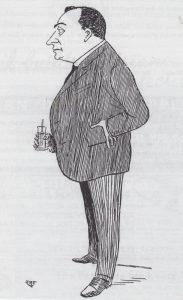
A.A. Osman, formerly physician in charge of the renal unit at Pembury Hospital, and the first president of the Renal Association, died at his home at Crowborough, Sussex, at the age of 78.
Arthur Arnold Osman was educated at Whitgift School and Guy’s Hospital. In 1916 he joined the Royal Navy and served as a surgeon sub-lieutenant in a destroyer which eventually was mined. In connection with this he was awarded the DSC. Returning to Guy’s he qualified with the Conjoint diploma in 1919 and was appointed house physician to Dr. (later Sir) Arthur F. Hurst. For seven years he specialized in children’s diseases, being appointed general physician to Queen Mary’s Hospital, Stratford, in 1924. That year he took the MRCP and in 1933 was elected FRCP. Much of his early work was carried out while he was in charge of the nephritis clinic at Guy’s, where in 1931 he was appointed clinical research Fellow. Although he remained at the hospital, going to Pembury in 1939, he was never made a full consultant physician to Guy’s and he remained there somewhat of a prophet without honour. However, outside, his reputation was high and his contribution to the literature of kidney disease, particularly in the field of renal complications of toxaemia of pregnancy, was considerable. He also edited the Original Papers of Richard Bright on Renal Disease (OUP, 1937) and these can be found in the Wills’ Library.
At Pembury Osman was in charge of the renal unit, which was the only one of its kind in the country, and it was he who was largely responsible for founding the Renal Association through the generosity of the Ciba Foundation, and he was its first President, an office which he held for 10 years. From this parent organisation numerous similar associations were established both on the Continent and in the USA. It was only after its inception that important international nephrology conferences were held. There is little doubt that as a result of his efforts there are many famous clinicians who can trace their inspiration and advancement to this source.
On the clinical side he is best remembered for employing massive doses of alkalis in renal oedema. This was an unorthodox treatment but achieved considerable success, though the charts he designed for use in his wards were alarming to the uninitiated. He was often heard to say that he would rather see the urine than the patient.
Osman was a man of strong personality and of few words, yet he had a great sense of humour which delighted his friends. One was impressed by his unfailing kindness, his generosity to colleagues, and his modesty. Devoted to the study of renal disease and aiming to establish the subject as a specialty in its own right, he achieved his goal, and his reputation and influence will last. In his retirement much of his time was spent in gardening and in listening to classical music.
He was survived by his widow, a son, and an adopted daughter.
[Brit.med.J., 1972, 2, 596; Guy’s Hospital Gazette, 20 May 1972; Photo.]
Courtesy Royal College of Physicians London, Munk’s Roll, Volume VI, page 364